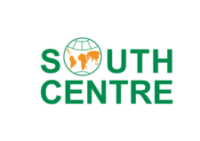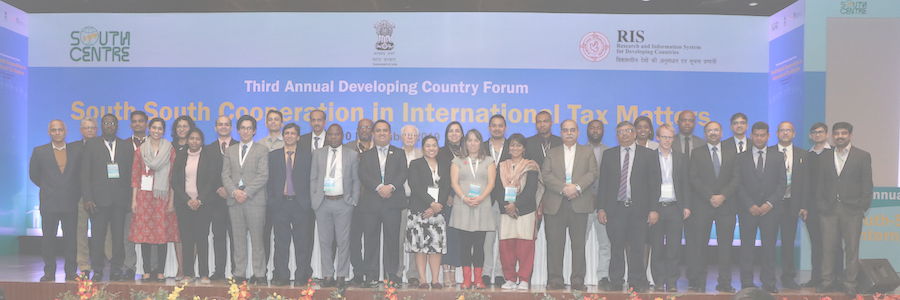SDGs: Food security and sustainable agriculture
[South Centre Paper on Sustainable Development Goals]
The attainment of food security and the move towards sustainable agriculture, including increased food production in developing countries, are among the most important issues in the SDGs.
In line with the conceptual approach taken by the G77 and China, as in the statement at the second session of the Open Working Group on SDGs on 17 April, it is important that in considering this issue, the international factors linked to enhanced global partnership are taken into account, as well as the means of implementation, together with the national actions to be taken by countries.
This approach is essential because the formulation of laudable goals at the national level would not be attainable unless the structural factors, including international factors, are addressed. Similarly, developing countries require international cooperation in finance, technology transfer and capacity building (the means of implementation) if they are to achieve the goals in these issues.
The Future We Want, ie the outcome of Rio + 20, deals with food and agriculture issues in its paras 108-118. Many of the points we need can be drawn from there.
International factors
On the international factors, the following points are important. First, the world trading system remains in need of reform in respect of agriculture, the sector where significant distortions are still very significant and where the rules are skewed against the developing countries. Para 118 recognises the need for an open and equitable multilateral trading system that promotes rural development and food security. Therefore there should be goals and targets in the trade area.
There are still massive amounts of subsidies and supports provided by the developed countries. According to OECD estimates, the subsidies given to farm producers in all OECD countries totalled US$252 billion in 2009, which is 22% of the value of gross farm receipts in that year, a level similar to 2007 and 2008. (In some commodities the support is very high; in the case of rice, commodity specific support amounted to 60% of total producer rice receipts.) If other supports are also counted, such as infrastructure, marketing and consumer support, the total support estimate rises to $384 billion in 2009 for the OECD countries.
Developing countries can never match that kind of subsidies, which are unfair to them, because cheaper imports coming from some OECD countries compete with and overwhelm their local products, and furthermore the developing countries are also unable to compete in third markets. The case of cotton is well known. Many farmers in developing countries have lost their market share and even their livelihoods due to the unfair system. Many countries, including LDCs that were self sufficient in food or exporters of food have become dependent on imports.
Therefore one of the targets in a SDG for food and agriculture is that the export subsidies in developed countries should be eliminated as soon as possible (in fact the 2005 WTO Ministerial agreed on an elimination target year of 2013) and that trade distorting subsidies in developed countries should be very drastically reduced as soon as possible too.
Meanwhile, the WTO has agreed on the principle that developing countries should be allowed to take measures to promote their food security, farmers’ livelihoods, and rural development. However, there has not been agreement yet on how to translate these principles into concrete rules and measures. Therefore another goal or target should be that concrete measures and rules should be established as soon as possible to put into effect the principle that developing countries be enabled to promote food security, farmers’ livelihoods and rural development in the multilateral trade rules, as well as in other trade agreements.
Another international factor is the need for increased international priority and financing to be provided to supporting food security and agriculture production in developing countries. In previous decades, this priority and funding had declined very significantly. Therefore another goal or target should be that international funding for developing countries to develop their agriculture production and to improve their food security situation should be significantly increased.
Another major issue recognised in paras 116 and 117 is the need to curb excessive food price volatility and to address its root causes including structural causes. There is growing evidence that speculation in the commodity markets is a significant cause of such food price volatility. Therefore there should be a target or goal to address food price volatility and its structural and root causes, including speculative practices in the commodity markets.
Moreover, another target is that developing countries should be given adequate policy space, including in conditions for loans and aid, to support their agriculture sector and their farmers through various measures such as credit, marketing, storage, processing, provision of agricultural inputs, land reform and land improvement measures, and measures to make agriculture more sustainable through improved sustainable agriculture methods. This reminder of the need for policy space is because in the past decades, many developing countries faced conditionalities and rules that prevented them from providing such supports to their agriculture sector.
Means of implementation
Developing countries should also be assisted through finance and technology as well as institution building and capacity building, in implementing national level SDGs on food and agriculture. The modalities for this should be worked in concrete ways and included as an integral part of the SDGs.
National level measures
At the national level, there can be goals and possible targets that are derived firstly from the Rio plus 20 outcome.
These include:
- The right to adequate food and freedom from hunger, with targets for improving the food and nutrition status of the population (to be drawn from para 108).
- Promoting food production and addressing needs of rural producers through enhancing access, credit, markets, secure land tenure, health care, social services, affordable technologies (para 109).
- Boosting productive capacity of small farmers in developing countries through proper functioning of markets, storage, rural infrastructure, research, post harvest practices, etc. (Para 110).
- Promote and enhance sustainable agriculture practices in crops, livestock and the marine sector including through ecological processes that support food production systems and research and extension work among farmers for environmentally sound production systems (Paras 111-114).












